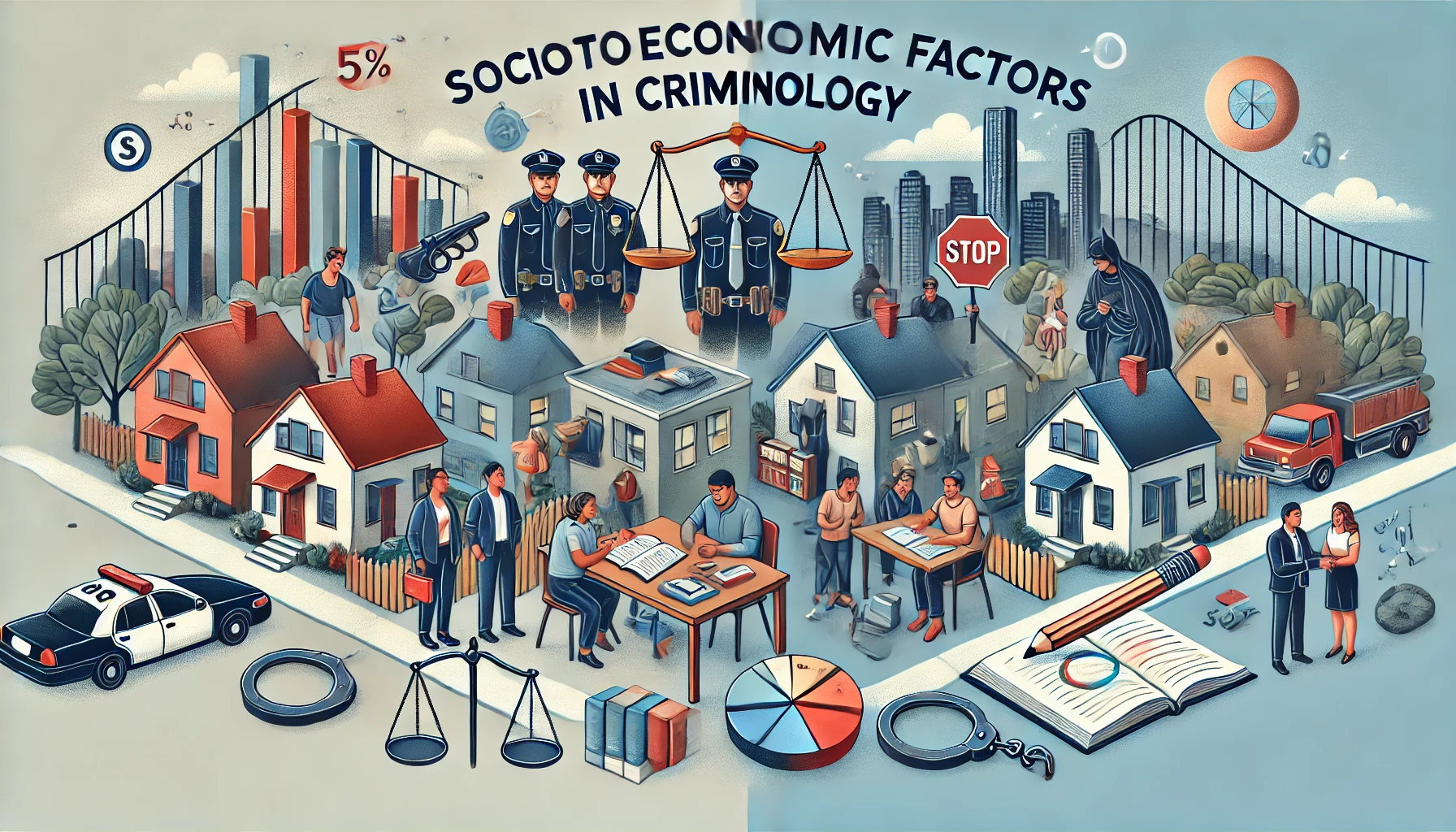Criminology, the study of crime and its causes, has long recognized the profound influence of socioeconomic factors on criminal behavior. These factors, encompassing elements like poverty, education, and employment, provide crucial insights into the roots of crime and the disparities observed within criminal activity across different societal groups. This article examines the key socioeconomic determinants of crime and their implications for criminological research and policy.
1. Poverty and Economic Disparities
Poverty is one of the most significant socioeconomic factors associated with crime. Individuals and communities experiencing economic deprivation often face increased exposure to crime, both as perpetrators and victims.
Financial Strain and Crime
Economic hardship can lead to desperation, pushing individuals toward illegal activities to meet basic needs. Theft, drug trade, and other forms of crime often emerge as survival mechanisms in impoverished areas.
Social Exclusion
Poverty is also tied to social exclusion, where marginalized groups are denied access to opportunities and resources. This exclusion fosters resentment and alienation, which can escalate into criminal behavior as a form of resistance or rebellion.
2. Unemployment and Underemployment
Unemployment and underemployment are strongly linked to crime rates, particularly property and violent crimes. When individuals are unable to secure stable, well-paying jobs, the lack of legitimate income sources may push them toward criminal endeavors.
The Role of Job Insecurity
Job insecurity contributes to psychological stress and a lack of stability, which are factors often correlated with increased criminal activity. Communities with high unemployment rates typically experience higher crime rates.
Youth Unemployment
Youth unemployment is particularly concerning, as it leaves young individuals vulnerable to the influence of delinquent peer groups and organized crime networks. Addressing youth unemployment through job creation and vocational training can significantly reduce crime rates.
3. Education and Crime
Education serves as a protective factor against criminal behavior, offering individuals the skills and opportunities needed to succeed in lawful pursuits. Conversely, lack of education is a risk factor for involvement in crime.
The School-to-Prison Pipeline
In some societies, systemic issues within educational systems disproportionately impact marginalized groups, leading to higher dropout rates and subsequent criminal involvement. This phenomenon, known as the school-to-prison pipeline, highlights the interplay between education policies and criminal justice systems.
Importance of Early Intervention
Early educational interventions targeting at-risk youth have proven effective in reducing crime rates. Programs focused on literacy, mentorship, and after-school activities can divert children from criminal pathways.

4. Urbanization and Community Characteristics
The socioeconomic dynamics of urban areas contribute significantly to crime patterns. Urbanization often brings together diverse populations in densely packed settings, creating unique social challenges.
Inequality in Urban Areas
Urban centers frequently exhibit stark economic disparities, with wealthier neighborhoods coexisting alongside impoverished areas. This proximity can lead to social tensions, fueling crimes such as burglary and robbery.
Social Disorganization
Social disorganization theory posits that communities with weak social ties and lack of collective efficacy experience higher crime rates. Investing in community development and fostering social cohesion can mitigate these effects.
5. Housing and Living Conditions
Housing instability and substandard living conditions are critical socioeconomic factors influencing crime. Overcrowded housing, homelessness, and poorly maintained neighborhoods create environments conducive to criminal activity.
Homelessness and Crime
Homeless individuals are often both victims and perpetrators of crime. The lack of shelter and resources exposes them to exploitation while increasing their likelihood of engaging in survival crimes.
Gentrification and Displacement
Gentrification, while revitalizing neighborhoods, can displace low-income residents, forcing them into unfamiliar and less stable environments. This displacement can disrupt social networks and contribute to higher crime rates.
Implications for Policy and Criminological Research
Understanding the socioeconomic factors influencing crime is vital for effective policymaking. Strategies to address these factors include:
- Poverty Alleviation: Social welfare programs, income support, and affordable housing initiatives can reduce economic disparities.
- Educational Access: Investing in education, particularly in disadvantaged areas, can break the cycle of poverty and crime.
- Employment Programs: Job training and employment opportunities for marginalized populations can reduce crime rates.
- Community Development: Strengthening community ties and fostering collective efficacy can mitigate the effects of social disorganization.
Conclusion
Socioeconomic factors are deeply intertwined with crime, shaping the behaviors of individuals and communities. By addressing issues such as poverty, unemployment, education, and housing, policymakers and criminologists can develop comprehensive strategies to reduce crime and promote social equity. A holistic approach that considers these factors is essential for building safer and more inclusive societies.

